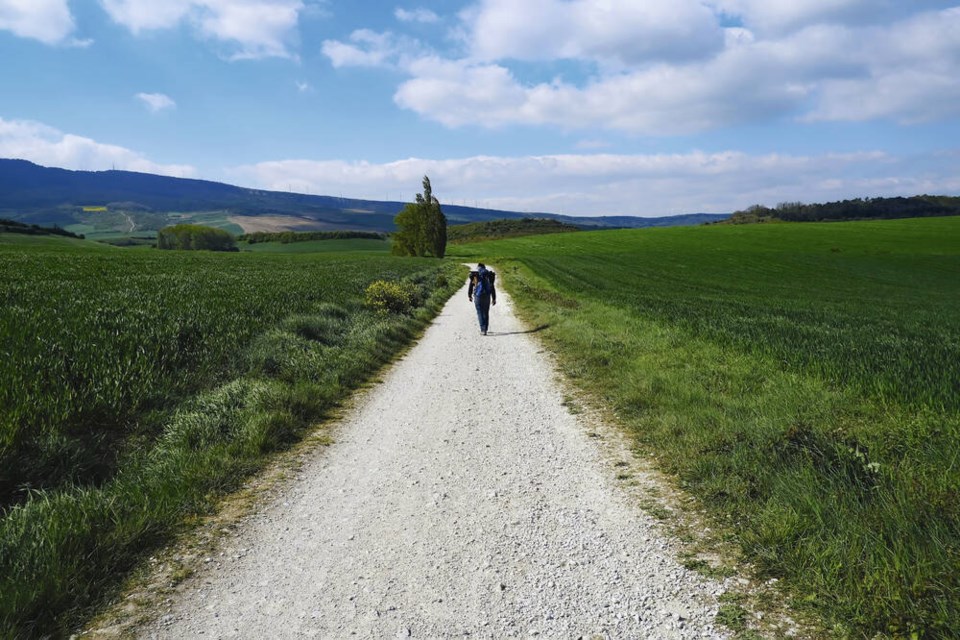It took 18 years, but Ron Perrier has now seen the world.
When he landed on Oct. 24 in Funafuti, the capital of Tuvalu — an island nation in Polynesia made up of nine atolls and reefs — the retired physician could claim to having been to every one of the United Nations’ 193 member countries.
But it’s not so much where he’s travelled, as how he travels.
“Unless there are no other options, I avoid tours, guides, hotels, restaurants and taxis,” Perrier said from his home in Courtenay.
“I don’t buy souvenirs, not even fridge magnets. I don’t take photographs but look at things for visual memory.
“I travel alone with no fixed itinerary.”
Perrier has Asperger’s syndrome, a form of autism that makes it hard to relate to others socially, so travelling solo suits him.
He had a medical practice in Castelgar, while also working in the Canadian Arctic. After his divorce in 1995, he had a relationship with a woman who encouraged him to travel with her to Patagonia.
“That planted a seed and I just developed a cheap lifestyle and saved until I thought I would never have to work again,” Perrier said.
“And that’s what happened. I was 53 and I’ve never had to work again.”
If anything, he added, because of his frugal lifestyle and wise investments, he’s probably wealthier now than he was in 2006.
His travels are often oriented to seeing World Heritage Sites, of which he’s visited 896 of 1,201, the sixth most visits in the world according to Nomad Mania, a website for keen travellers.
Picking favourite travels is like choosing a favourite among your children, but he lists his as more than three dozen hiking trips in the American Southwest, walking 2,000 kilometres of the Camino de Santiago, wandering overland on the Silk Road from Xian in China to Israel, more than 100 dives from Oceania to Indonesia, hiking from Morocco to Cape Town.
“And two years in Europe and Western Asia driving 200,000 kilometres from Iceland to Azerbaijan,” he added.
For that trip, he bought a high-end van for about $100,000 (he got back $85,000 when he sold it after two years), ate practically all his meals in the vehicle and never once in 700 nights had to pay for accommodation.
Oh yeah, and he travels almost exclusively in flip flops.
All this has made Perrier, to his knowledge, the most-travelled Canadian of all time.
His journeys are recorded by Nomad Mania, which divides the world into 1,301 regions, 65,000 destinations and 60 categories (World Heritage Site, etc.), and verifies its 50,000 members’ travel.
“I’m the only Canadian who has proven where he has travelled,” Perrier said.
As of his trip to Tuvalu, he had visited 941 of Travel Mania’s 1,301 regions, making him No. 42 in the world, and his trips to nearly 18,000 destinations make him No. 2 in the world.
“I avoid tours — they’re restrictive and expensive,” Perrier said. “Tourists would frustrate me.
“Dealing with a group of people easily overwhelms my Asperger’s syndrome. I do best alone.”
There are countries where tours are mandatory, however: North Korea, Tibet, Bhutan, Turkmenistan, Syria, Yemen, South Sudan and Somalia. He found joining a tour group of 17 made the visa process far easier while visiting several African countries.
And he does meet interesting people on tours, such as his only travel companion on a tour in Turkmenistan.
“She was 26 and on the Nobel selection committee for the Literature Prize, studying classical Greek philosophy in Greek and in German.”
He’s met his share of oddballs, but on the whole he said people are kind-hearted. He buys no travel insurance, and only checks advisories issued by Travel Canada “for comic relief,” before heading to somewhere like Afghanistan or Yemen.
“Both those places are safer than going to New York’s Lower East Side at midnight or going to Barcelona, where your chances of being robbed are 100 per cent if you’re careless,” Perrier said. “The whole point is that the world is really an incredibly safe place.”
He’s written an extensive travel ebook that includes all sorts of tips, along with his thoughts and experiences.
His next planned trip is to drive across Canada, to see Newfoundland for the first time. Were he to drive non-stop on his first day, he could reach Swift Current in 15 hours.
Which, ironically, was how long it took him to get from Nanaimo to Courtenay upon returning from his latest adventure.
He’d flown from Shanghai via Tokyo to Vancouver, then taken a ferry to Nanaimo, arriving at 6 p.m. only to realize there’d been a mixup with his ride.
“I hate staying in hotels and nothing occurred to me other than hitchhiking,” he said.
It took him an hour to get his first ride, and that only went as far as Parksville. Another 45 minutes, and a ride to Bowser.
“It’s 10 o’clock at night, I can sleep anywhere.”
He unrolled his sleeping bag and mat, and settled down inside a gazebo in a public park, hitting the highway with his thumb again at 6 a.m. for more hopscotching his way home: Mud Bay, Fanny Bay, a public bus to within two blocks of his Courtenay home.
“It took me 15 hours to go the final 110 kilometres. With all my experiences, that was my most difficult trip,” he said with a laugh.



